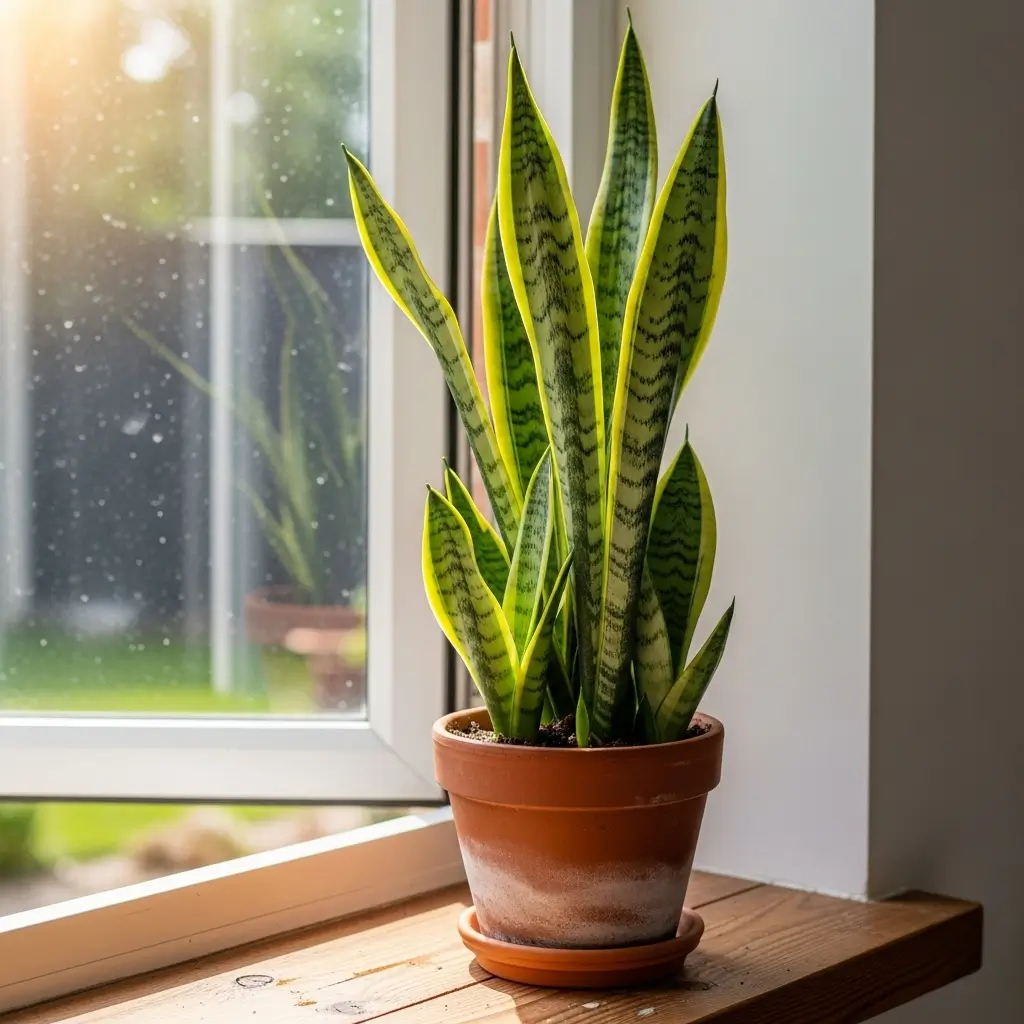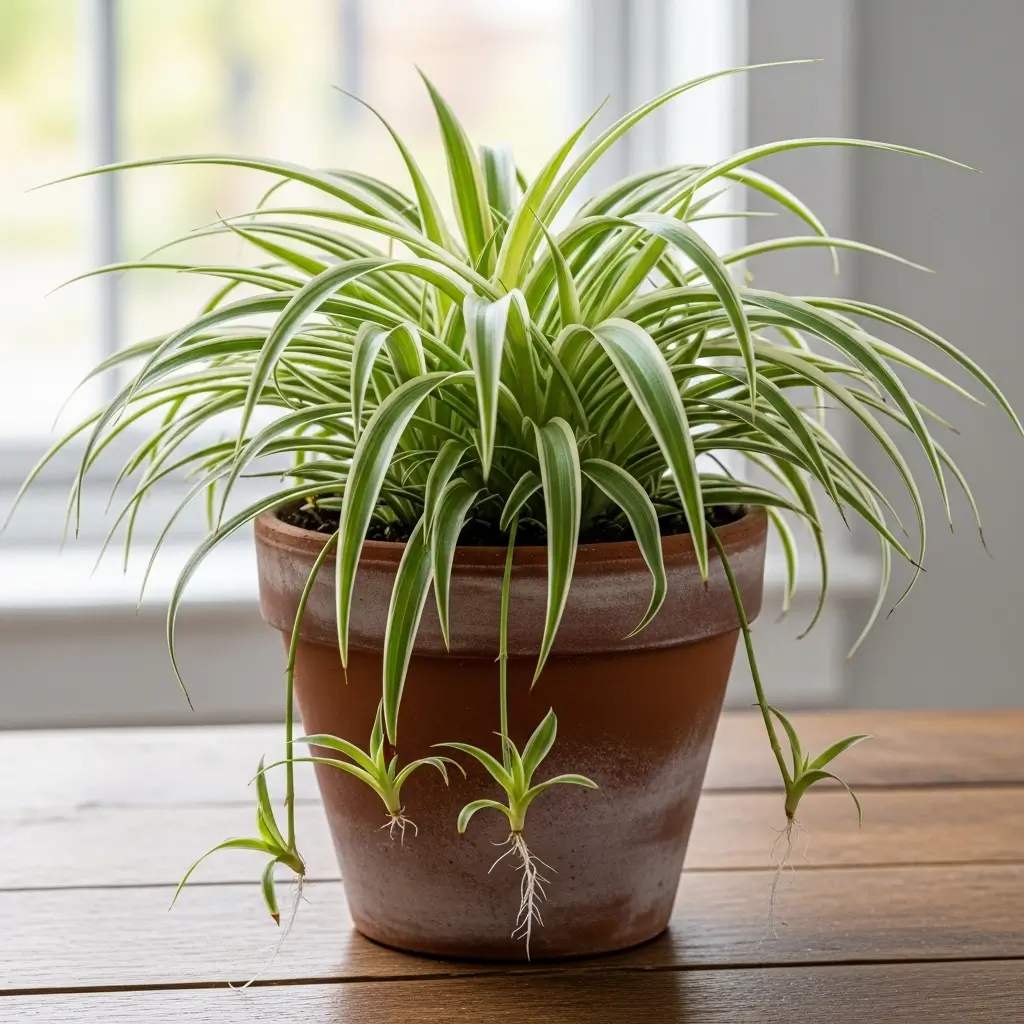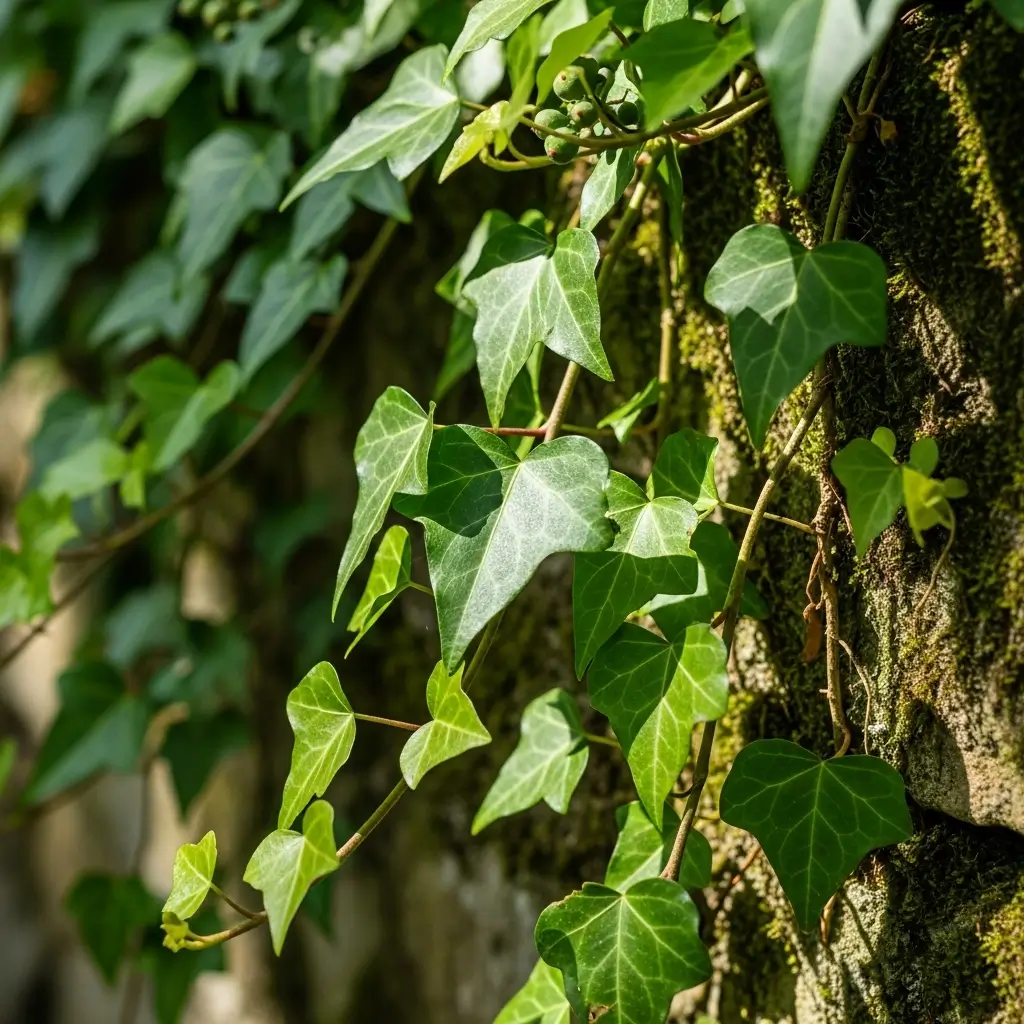
6 Best Indoor Plants for Cleaner Air (NASA-Tested for 2025)
Nov 15, 2025
Indoor Plants for Cleaner Air
Your houseplants do much more than just look pretty. The best indoor plants for cleaner air work as natural air purifiers and remove harmful pollutants that build up in your home over time.
We found that there was clear evidence that indoor plants purify the air by eliminating toxins like formaldehyde, trichloroethylene, benzene, and xylene from your living spaces.
Several plants work extra hard during your sleep. Aloe Vera releases oxygen and absorbs carbon dioxide at night, which cleans your air while you dream. The Boston Fern's natural humidifying properties improve air quality by restoring moisture by a lot. This piece walks you through 6 best plants for indoor air quality that NASA has tested and approved for 2025.
Peace Lily

The Peace Lily ranks among the best natural air purifiers you can add to your home. These tropical powerhouses showcase stunning white flowers that rise above glossy green foliage. They don't just look beautiful—they actively clean your indoor air.
Peace Lily pros and cons:
Pros:
- Superior air purification: NASA's clean air study shows Peace Lilies are exceptional air cleaners. They remove 23% of trichloroethylene (TCE) within 24 hours. They also filter formaldehyde, benzene, carbon monoxide, and cigarette smoke.
- Humidity booster: These plants release moisture into the air through transpiration. This helps maintain healthy humidity levels, which proves especially helpful during dry winters.
- Forgiving nature: Peace Lilies tell you what they need—their leaves droop when thirsty but bounce back quickly after watering.
- Minimal light requirements: These plants can thrive and bloom even in low-light conditions, unlike many flowering plants.
- Low maintenance: They need fertilizer only 1-2 times yearly and grow better in slightly cramped pots.
Cons:
- Toxic if ingested: The plant's calcium oxalate crystals can irritate the mouth, throat, and tongue if eaten. Keep them away from pets and children.
- Sensitivity to chemicals: Tap water with chlorine or fluoride can harm these plants—they prefer rainwater or distilled water.
- Brown leaf tips: The leaves might turn brown without enough humidity or too much fertilizer.
- Occasional repotting needed: Peace Lilies like tight spaces but need new pots as they grow.
Peace Lily pricing:
Peace Lilies cost less than many other houseplants. Prices depend on size and variety. You'll pay about $75 for an 8-inch pot and $95 for a 10-inch pot. Small plants and common varieties cost less. The 'Sensation' variety, which grows up to 6 feet tall and wide, costs more.
Different varieties offer unique features. The 'Domino' shows off variegated foliage. 'Mauna Loa Supreme' produces large flowers. 'Little Angel' stays small at 12-15 inches tall.
Snake Plant

The Snake Plant stands out among air-purifying houseplants with its bold sword-like leaves and tough nature. This plant, once called Sansevieria but now known as Dracaena trifasciata, looks great and cleans air effectively. No wonder it ranks as one of the best indoor plants for cleaner air.
Snake Plant pros and cons:
Pros:
- Superior air purification: Snake Plants tackle four major toxins - benzene, formaldehyde, trichloroethylene, and xylene. Most houseplants only handle one or two.
- Remarkable adaptability: These plants thrive anywhere from dim corners to bright windowsills.
- Exceptional drought tolerance: You can skip watering for 2-6 weeks depending on the season - perfect if you forget sometimes.
- Oxygen production at night: The night-time oxygen boost might help you sleep better.
- Allergen reduction: Fresh oxygen and moisture help cut down airborne allergens like dust and dander.
Cons:
- Toxicity concerns: The calcium oxalate crystals can irritate mouths and upset stomachs of pets and people who eat it.
- Slow growth rate: You'll only see a few inches of growth yearly.
- Limited air purification capacity: One plant helps, but you need several to really clean your air.
- Sensitivity to overwatering: Too much water leads to root rot - the fastest way to kill these plants.
Snake Plant pricing:
Snake Plants won't break the bank. Small ones start at $10, while common types like Sansevieria trifasciata Superba, Sansevieria Futura Superba, and Sansevieria trifasciata Laurentii run around $25.
Rare hybrids like the Golden Hahnii can cost over $100. The Sansevieria Cylindrica offers great value - usually under $25 with excellent air-cleaning power.
Smaller plants (6-10 inches) cost less, while mature ones (2-3 feet) cost more but make an instant statement in your space.
Spider Plant

Spider Plants shine as champions among air-purifying houseplants. Their graceful arching leaves and amazing power to curb indoor pollutants make them special. These African natives first came to Europe in the late 18th century and have stayed popular - and with good reason too. They're beautiful and bring many benefits.
Spider Plant pros and cons:
Pros:
- Superior air purification: Cleans multiple toxins including formaldehyde, xylene, and toluene.
- Exceptional hardiness: Grows well in various light conditions from bright indirect sunlight to low light areas.
- Non-toxic safety: Safe for pets and humans, unlike many common houseplants.
- Easy propagation: Grows baby plants you can easily snip and root in water or soil.
- Humidity enhancer: Adds moisture to the air through evapotranspiration, which helps with skin and breathing.
Cons:
- Limited impact of single plants: You need several plants to improve air quality - some say thousands for real change.
- Sensitivity to chemicals: Tap water's fluoride and chlorine often turn leaf tips brown.
- Sprawling growth habit: Baby plants spread in all directions, needing space management.
- Periodic maintenance needs: Needs repotting every 2-3 years when roots grow through drainage holes.
Spider Plant pricing:
Spider Plants cost less than most air-purifying houseplants. You can find them for $15 to $30, depending on size and type. Common variegated varieties are easy to find, including 'Vittatum' (green with white center stripe), 'Variegatum' (white edge stripe), and 'Bonnie' (curly leaves).
Plant lovers can buy specialty packs with multiple types (Ocean Spider, Hawaiian Spider, Green Spider, and Bonnie Curly Spider) for about $17-25. These packs let you try different Spider Plant looks at a great price.
Aloe Vera

Aloe Vera does double duty in your home - it purifies air and acts as a natural first aid kit with its spiky leaves and gel-filled interior. NASA has tested this succulent that quietly removes formaldehyde and benzene from your air. You can also use it to soothe minor burns and skin irritations.
Aloe Vera pros and cons:
Pros:
- Dual functionality: Works as both air purifier and medicinal plant - use the leaf gel to soothe burns, cuts, and skin irritations
- Nighttime oxygen release: Produces oxygen at night, unlike most plants, which could help you sleep better
- Low maintenance: Needs minimal watering and care - perfect if you don't have a "green thumb"
- Toxin removal: Filters formaldehyde, benzene, and carbon monoxide from your indoor air
- Humidity regulation: Boosts air humidity, which helps if you have dry skin or breathing issues
Cons:
- Toxic if ingested: Has compounds that can upset digestion in pets and humans
- Slow growth: Takes time to reach full size
- Sensitivity to overwatering: Roots can rot if you water too often
- Light requirements: Needs bright, indirect light to grow well - won't work in very dark spaces
Aloe Vera pricing:
You can add Aloe Vera to your indoor garden without breaking the bank. Small plants start at just $4.95 - about the same as your morning coffee. Regular varieties cost between $15-40, based on size and age.
Specialty varieties cost more. The Aloe Barbadensis starts at $40, and you'll pay similar prices for decorative types like 'Christmas Carol' and 'Crosby's Prolific'. More unique varieties such as Aloe Brevifolia and Aloe Nobilis usually cost around $59.
These plants offer great value - they can live 12 years indoors and up to 20 years outdoors with good care. This makes them a smart investment to improve your indoor air quality over time.
Dracaena

Dracaena plants are known for their diversity and adaptability. They add striking beauty to indoor spaces and are a great way to get cleaner air. This genus has about 120 species of tropical evergreens that can enhance any home's air quality.
Dracaena pros and cons:
Pros:
- Exceptional air purification - Cleans multiple chemicals including formaldehyde, benzene, and trichloroethylene
- Adaptability to light conditions - Does well in bright indirect light but can handle low light areas, making it great for any home
- Low maintenance requirements - Stores water in trunks, so it survives occasional neglect
- Architectural appeal - Creates dramatic shapes with different leaf patterns, colors, and growing styles
- Longevity - Lives 10-15 years with proper care, and can last decades indoors
Cons:
- Toxicity concerns - Has saponins that are toxic to pets and humans, which can cause mouth and stomach issues if eaten
- Sensitivity to tap water - Can get brown leaf tips from tap water with chlorine, fluoride, or other chemicals
- Slower growth rate - Takes time to reach full size
- Root rot vulnerability - The biggest problem comes from overwatering
- Temperature sensitivity - Struggles in temperatures below 55°F (13°C)
Dracaena pricing:
These plants give you great value as indoor air purifiers. Prices change based on size, type, and age. Popular types like Dracaena Lisa cost $15-30 for smaller plants (4-6 inches). Medium-sized ones (1-2 feet) usually run $30-75 depending on the variety and pot.
Special varieties cost more. The Dracaena 'Lemon Lime' with its bright colors or the 'Warneckii' with its unique stripes usually cost more, especially larger plants. You can save money by buying variety packs with multiple small dracaenas, which lets you try different types without spending too much.
English Ivy

English Ivy (Hedera helix) has decorated homes for centuries with its graceful vines and heart-shaped leaves. This classic European climber adds timeless charm and cleans harmful toxins from your indoor air.
English Ivy pros and cons:
Pros:
- Superior toxin removal: Filters formaldehyde, benzene, xylene, and toluene effectively
- Versatility: Works as hanging plant, climber, or table specimen
- Variety options: Hundreds of cultivars with different leaf shapes, sizes, and patterns
- Humidity booster: Adds moisture to air through transpiration
- Cool temperature preference: Grows well in cooler rooms where tropical plants fail
Cons:
- Toxicity concerns: Contains substances that can upset digestion if pets or people eat it
- Contact dermatitis risk: Skin irritation can occur without glove protection
- Pest susceptibility: Spider mites attack in dry conditions, requiring constant attention
- Watering sensitivity: Needs balanced moisture - too much or too little causes problems
- Invasive outdoors: Grows aggressively in many regions
English Ivy pricing:
English Ivy ranks among the most budget-friendly air-purifying plants. Regular varieties cost between $10-30, depending on size and pot type. Unique varieties with special variegation patterns or leaf shapes might cost a bit more.
Varieties like 'Asterisk' with star-shaped leaves, 'Glacier' showing silver-gray edges, and 'California Fan' featuring crinkled leaves sell at similar prices. New plant parents should try the 'Glacier' variety - its cream-edged leaves offer great value.
Don't miss a beat!
New moves, motivation, and classes delivered to your inbox.
We hate SPAM. We will never sell your information, for any reason.

